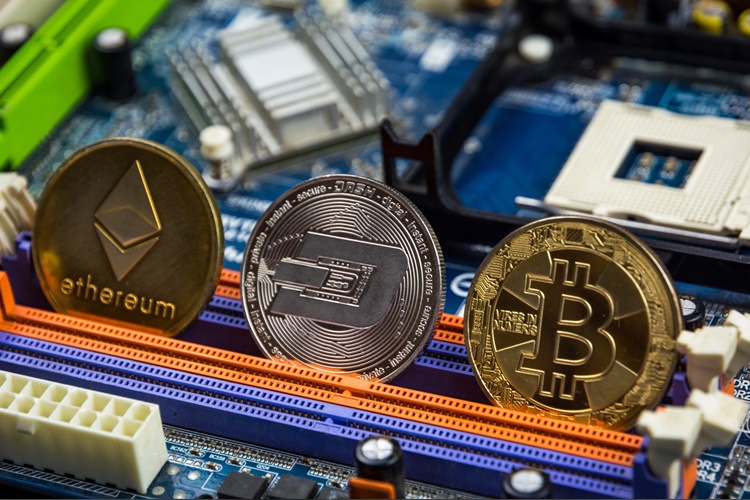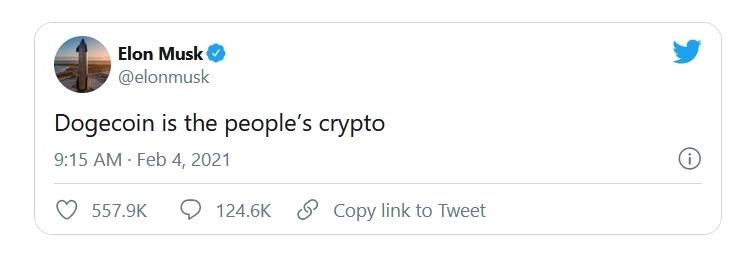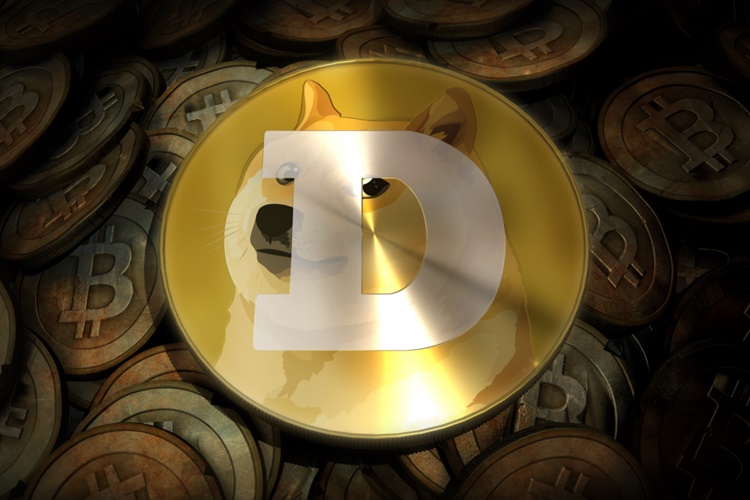Dogecoin (DOGE) is a peer-to-peer open-source cryptocurrency. It is considered an “altcoin” (alternative to Bitcoin) and an almost sarcastic “meme coin”. Launched in December 2013, Dogecoin has the image of a Shiba Inu dog as its logo. It was created as a joke, but eventually found a purpose as a friendlier and more approachable alternative to Bitcoin. Today it’s often used as an entry-point into the crypto world.
Dogecoin is a cryptocurrency based on Luckycoin (which is, in turn, based on Litecoin). Dogecoin was originally designed to be a more approachable alternative to Bitcoin, Litecoin, and other cryptocurrencies. As such, there aren’t any ground-breaking features that set Dogecoin apart from the pack. By late 2017, it was participating in the cryptocurrency bubble that sent the values of many coins up significantly. After the bubble burst in 2018, Dogecoin lost much of its value, but it still has a core of supporters who trade it and use it to tip content writers on Twitter and Reddit.
Beginnings of Dogecoin
Jackson Palmer, a product manager at the Sydney, Australia office of Adobe Inc., created Dogecoin in 2013 as a way to satirize the hype surrounding cryptocurrencies. Palmer has been described as a “sceptic-analytic” observer of the emerging technology, and his initial tweets about his new cryptocurrency venture were done tongue-in-cheek. But after getting positive feedback on social media, he bought the domain dogecoin.com.
Cocreator Billy Markus based Dogecoin’s code on Luckycoin, which is itself derived from Litecoin, and initially used a randomized reward for block mining. That was changed to a static reward in March 2014. Dogecoin uses Litecoin’s script technology and is a proof-of-work coin.
Palmer and Markus launched the coin on December 6, 2013. Two weeks later on December 19, the value of Dogecoin jumped 300%, perhaps due to China forbidding its banks from investing in cryptocurrency.

The Rise of Dogecoin
Dogecoin marketed itself as a “fun” version of Bitcoin with a Shibu Inu (Japanese dog) as its logo. Dogecoin’s casual presentation suited the mood of the burgeoning crypto community. Its script technology and unlimited supply was an argument for a faster, more adaptable, and consumer-friendly version of Bitcoin.
Dogecoin is an “inflationary coin,” while cryptocurrencies like Bitcoin are deflationary because there’s a ceiling on the number of coins that will be created. Every four years the amount of Bitcoin released into circulation via mining rewards is halved and its inflation rate is halved along with it until all coins are released.
In January 2014, the Dogecoin community donated 27 million Dogecoins worth approximately $30,000 to fund the Jamaican bobsled team’s trip to the Sochi Winter Olympic games.
“Numerous script miners still prefer Dogecoin (DOGE) over other Script PoW cryptocurrencies. Indeed, the Dogecoin (DOGE) hash rate is roughly 150 TH/s. This is just below the Litecoin (LTC) hash rate of 170 TH/s, likely because Dogecoin (DOGE) can be merge mined with Litecoin (LTC), meaning miners can mine both cryptos simultaneously using the same work. Essentially, practically everyone who mines Litecoin (LTC) chooses to mine Dogecoin (DOGE) as well, because merge mining Dogecoin (DOGE) increases profits.”
Zachary Mashiach of CryptoIQ
Six Interesting Facts About Dogecoin:
- Dogecoin was originally founded as the result of a joke made by Jackson Palmer in November 2013. When he was contacted by programmer Billy Markus, they decided to turn Dogecoin into a reality.
- Dogecoin was designed to be a friendly, more approachable form of cryptocurrency that could reach users put off by the cold complexity of Bitcoin. Even its name is taken from a popular Internet meme.
- Dogecoin has one of the largest and most active communities in the cryptocurrency world. This community has come together to fund a number of charitable efforts and other projects. They even managed to sponsor a NASCAR.
- One of the most common uses for Dogecoin today is as a tipping service. Users will tip other users for posts or contributions that they believe deserve recognition. It’s similar to a “like” but with more impact.
- There have been no technical updates or developments since 2015 when Jackson Palmer left the project by declaring that he was going on an “extended leave of absence”.
- In 2021 Dogecoin saw a major price surge thanks to an influx of users chasing GME style highs. This run was given a further boost when Elon Musk began tweeting about Dogecoin, calling it the “cryptocurrency of the people”.

Miners Are Rewarded with Dogecoin
Dogecoin’s creator sought to solve this problem by ensuring that miners would always be rewarded with new Dogecoin and so there would always be an incentive to mine more coins. An inflation-based approach was also designed to replace lost coins and keep Dogecoin at a stable 100 billion coins.
Elon Musk Affects the Dogecoin
Market-leader Elon Musk has also been a long-time supporter of Dogecoin. His tweets have often caused a significant price lift and he has described Dogecoin as the “people’s crypto”.

What Drives the Price of Dogecoin?
Dogecoin is a cryptocurrency, like all cryptocurrencies, it’s highly volatile and prone to large surges and big dips. Dogecoin, in particular, has experienced a fairly turbulent history and is prone to abrupt price changes.
“I have a lot of faith in the Dogecoin core development team to keep the software stable and secure, but I think it says a lot about the state of the cryptocurrency space in general that a currency with a dog on it, which hasn’t released a software update in over 2 years, has a $1B+ market cap.”
Jackson Palmer Creator of Dogecoin
Subscribe for more sales, business and investing posts. Have a lovely day!











